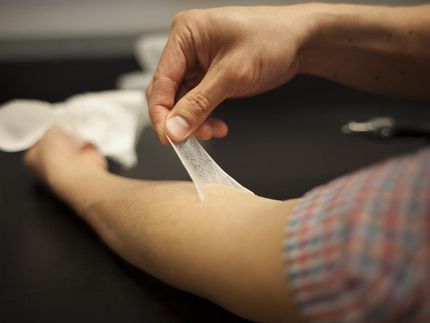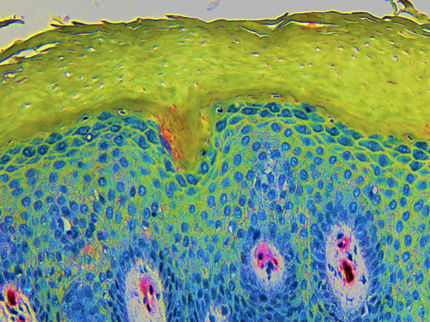Research breakthrough for drugs via the skin
A research team at Karolinska Institutet in Sweden has succeeded in describing the structure and function of the outermost layer of the skin – the stratum corneum – at a molecular level. This opens the way not only for the large-scale delivery of drugs via the skin, but also for a deeper understanding of skin diseases.
“You could say that we’ve solved the puzzle of the skin barrier, something that has great potential significance for dermatology,” says principal investigator Lars Norlén, Associate Professor at Karolinska Institutet’s Dermatology and Venereology Unit.
The upper layer of the skin is a watertight barrier called the stratum corneum. A research group at Karolinska Institutet have now structure determined this barrier layer at a molecular level, unlocking the secrets of the skin’s perviousness. This will hopefully enable the widespread administration of drugs though the skin instead of via pills or injections, which brings several advantages; for example, it means that drugs can be delivered evenly over time instead of in doses, and patients bypass the first-passage metabolism, whereby the entire dose passes the liver, thus increasing the risk of adverse effects.
“We can now construct computer simulations to help us find out which substances have to be added to different drugs to open up the skin,” says Dr Norlén. “We hope to one day be able to administer regular drugs like insulin and antibiotics this way.”
To conduct their study, the researchers developed an entirely new experimental approach involving rapidly freezing tiny skin samples and studying them under a low-temperature electron microscope.
“This has given us an unprecedented opportunity to determine the molecular structure and function of native cells and tissues in situ without having our data muddied by the addition of dyes, solvents or plastics,” adds Dr Norlén.
Their discovery has profound significance for dermatology. The majority of skin diseases manifest themselves in some kind of functional disorder of the skin’s protective barrier, and the researchers now want to use their method to determine such changes at a molecular level. If they succeed in this, it will be a decisive step towards a deeper understanding of these diseases and, hopefully, the development of new, improved treatments.
“This may be a breakthrough for dermatology,” says Dr Norlén. “Our team has devoted the past 20 years to unlocking the mysteries of the stratum corneum.”
All land-living organisms are surrounded by a protective watertight shell. In humans and other vertebrates, it comprises a uniquely complex layer of fat between the cells of the stratum corneum.
“Understanding how this protective barrier has developed is an important step towards explaining why life on land exists and is even possible,” says Dr Lars Norlén.
Original publication
“The Human Skin Barrier is Organized as Stacked Bilayers of Fully-extended Ceramides With Cholesterol Molecules Associated With the Ceramide Sphingoid Moiety”; Journal of Investigative Dermatology, 2012.
Most read news
Original publication
“The Human Skin Barrier is Organized as Stacked Bilayers of Fully-extended Ceramides With Cholesterol Molecules Associated With the Ceramide Sphingoid Moiety”; Journal of Investigative Dermatology, 2012.
Organizations
Other news from the department science

Get the life science industry in your inbox
By submitting this form you agree that LUMITOS AG will send you the newsletter(s) selected above by email. Your data will not be passed on to third parties. Your data will be stored and processed in accordance with our data protection regulations. LUMITOS may contact you by email for the purpose of advertising or market and opinion surveys. You can revoke your consent at any time without giving reasons to LUMITOS AG, Ernst-Augustin-Str. 2, 12489 Berlin, Germany or by e-mail at revoke@lumitos.com with effect for the future. In addition, each email contains a link to unsubscribe from the corresponding newsletter.
Most read news
More news from our other portals
Last viewed contents

Zifo acquires beyontics - Comprehensive range of laboratory services & solutions























































